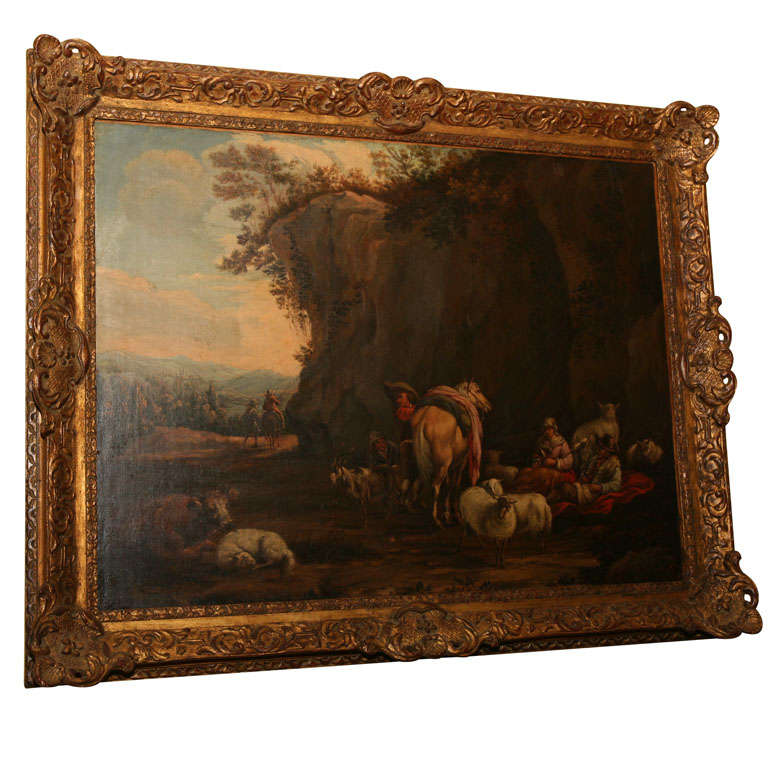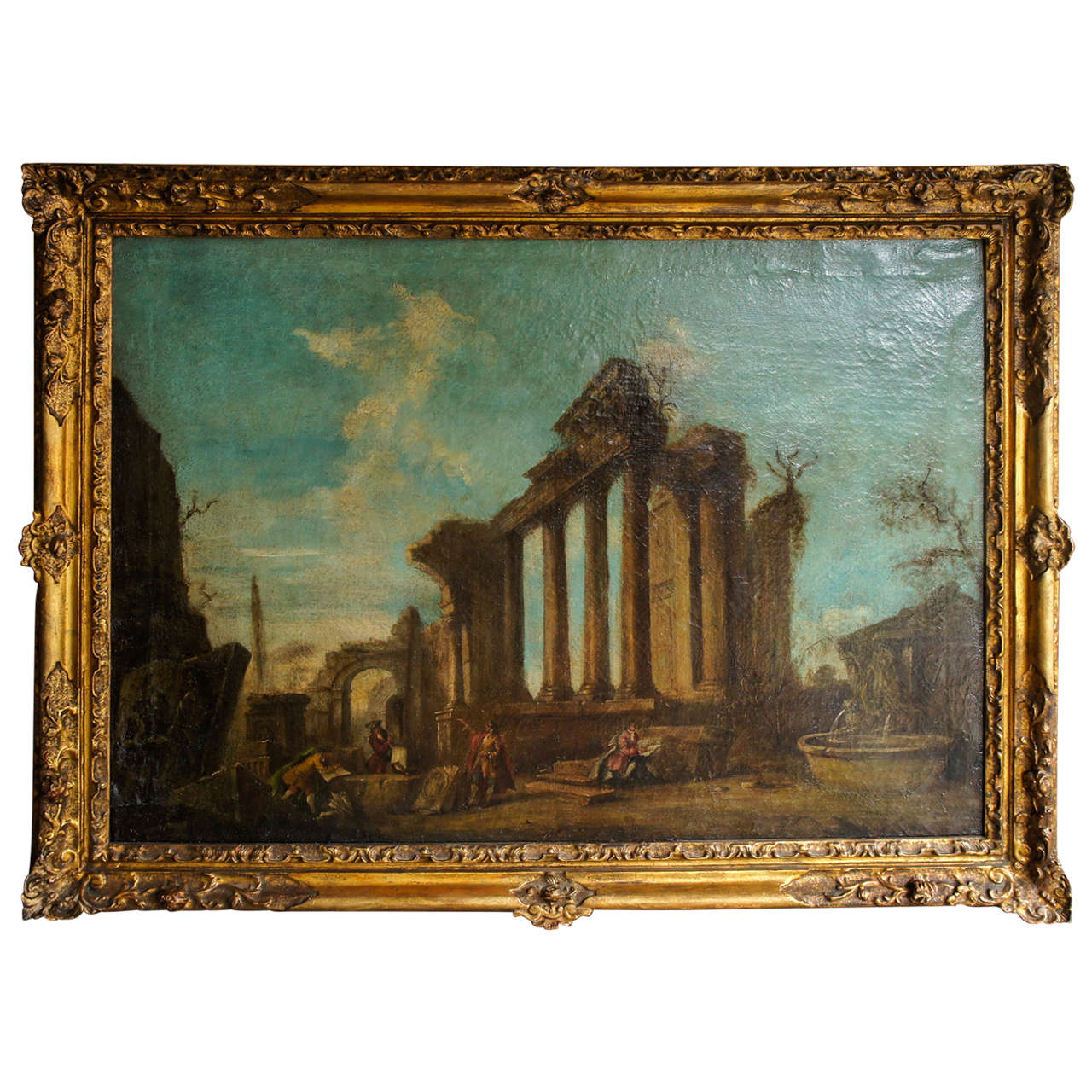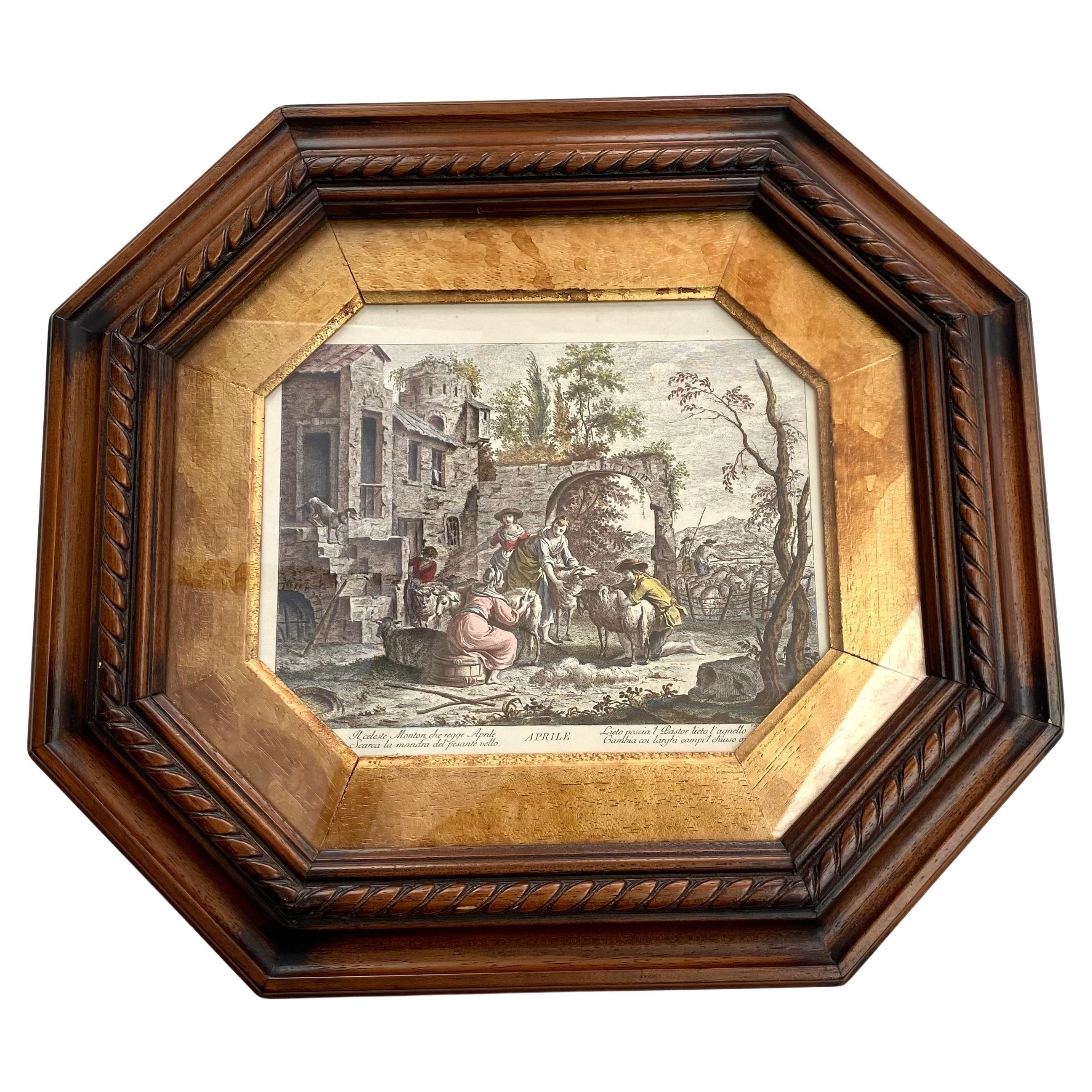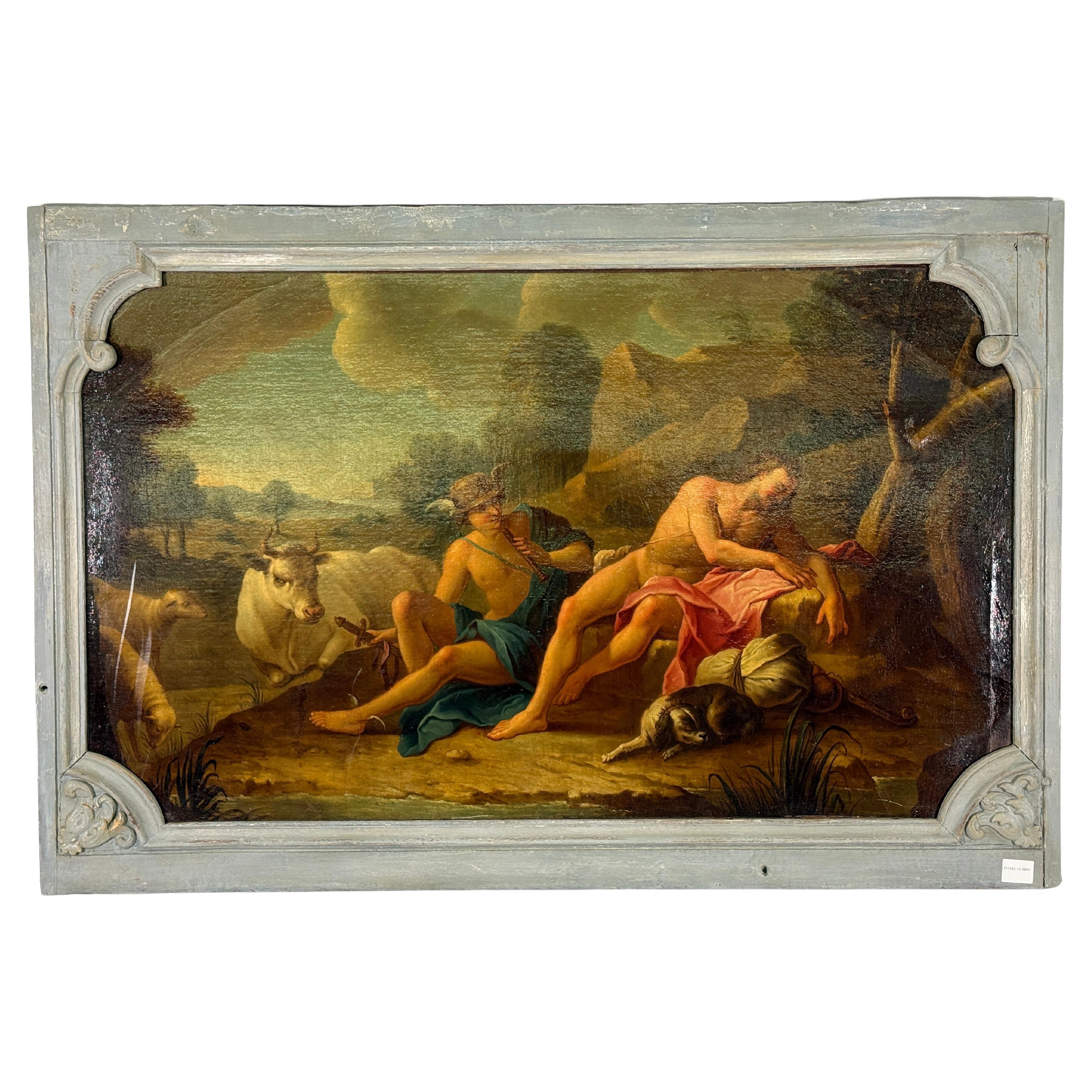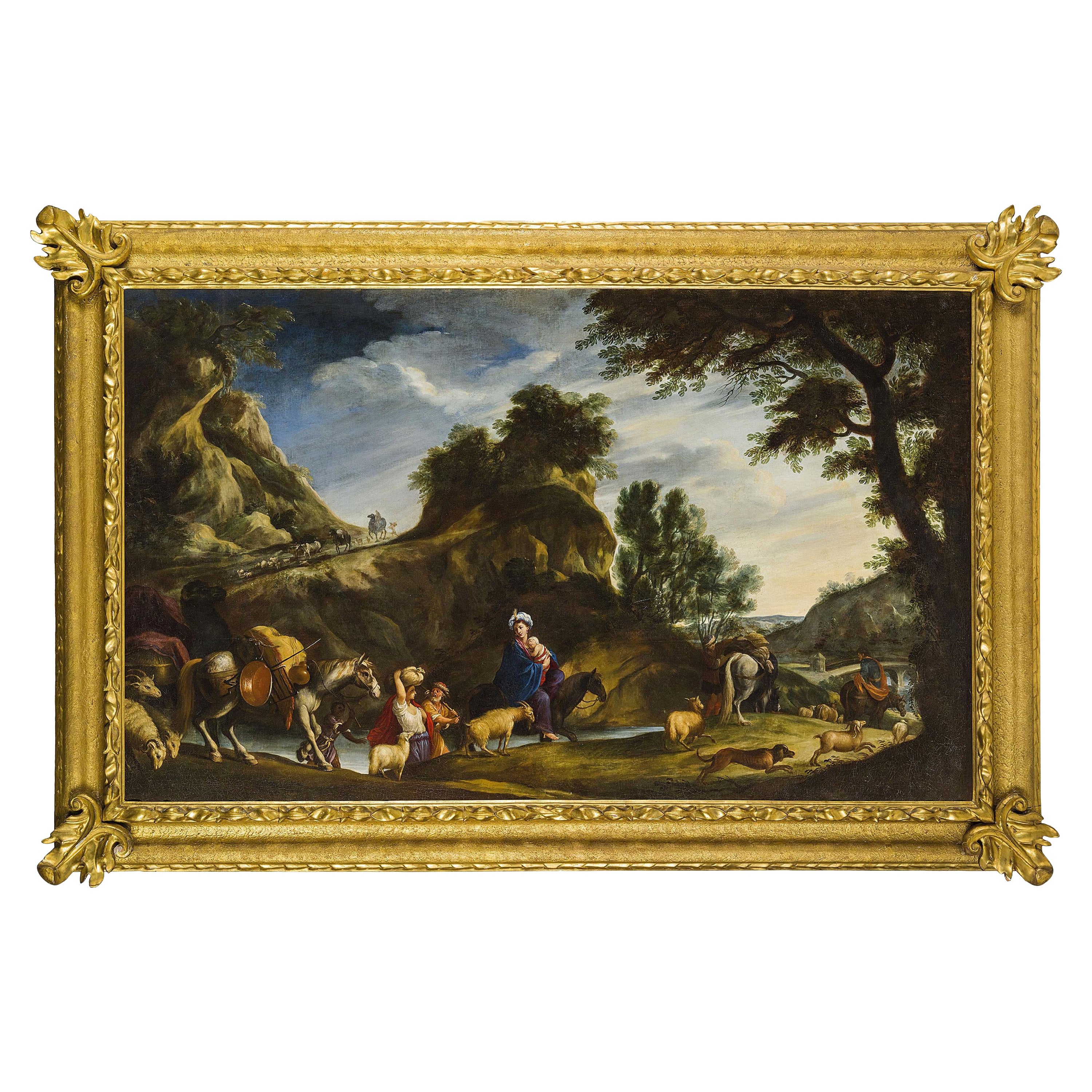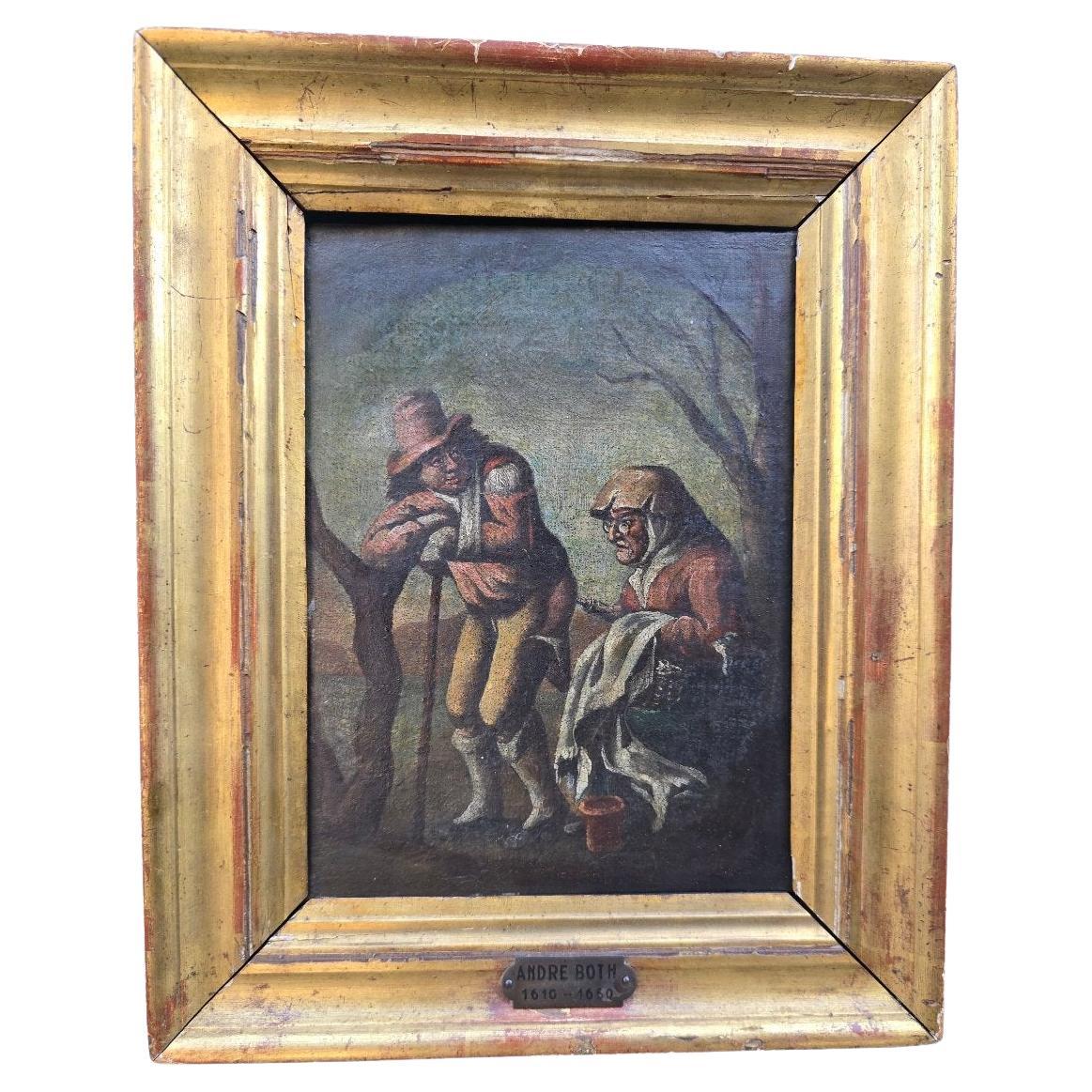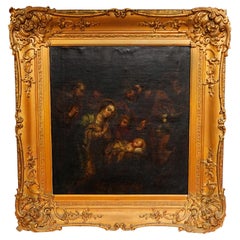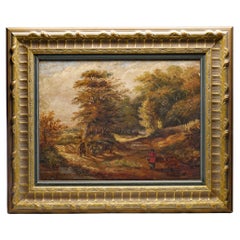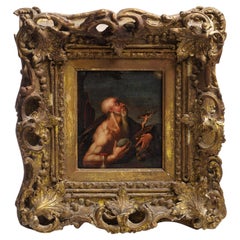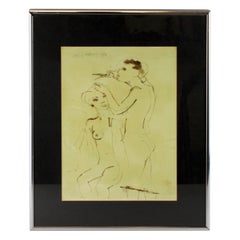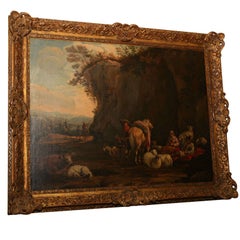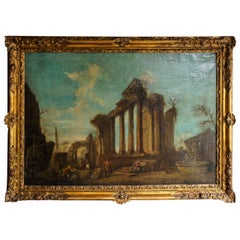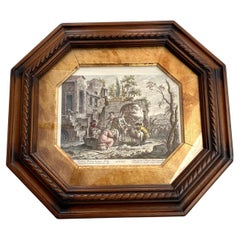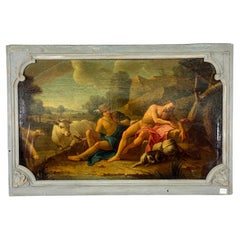Items Similar to Francesco Bartolozzi RA, 1728–1815, after an original painting of Pietro Testa
Want more images or videos?
Request additional images or videos from the seller
1 of 18
Francesco Bartolozzi RA, 1728–1815, after an original painting of Pietro Testa
$3,444.61
£2,500
€2,958.52
CA$4,745.84
A$5,287.54
CHF 2,760.35
MX$64,197.76
NOK 34,695.74
SEK 32,795.90
DKK 22,085.02
About the Item
Francesco Bartolozzi RA, 1728–1815, after an original painting of Pietro Testa
Etching is depicting the holy Family, with Shepherd and Baby Jesus.
Made in Italy, Ca. 1785
Lettered, lower left: lower right: "F. Bartolozzi"; lettered, lower center: "After an Original Drawing of Pietro Testa.
Francesco Bartolozzi, 1728 - 1815, Florentine engraver in the service of George III of England.
Francesco Bartolozzi, the son of a goldsmith, studied painting in Florence, trained as an engraver in Venice, and began his career in Rome. In 1764 he was invited to London, where he remained for 40 years. For his patron, George III, he executed numerous engravings, including those after Hans Holbein’s drawings at Windsor. He also made many engravings of paintings by Italian masters and by his friends, the fashionable painters Giovanni Cipriani and Angelica Kauffmann.
Pietro Testa
Painter, draughtsman and etcher, b. Lucca 1612, d. Rome 1650. He was chiefly active in Rome, where he arrived probably in 1628 and where he is recorded by Passeri (ed. Hess, 1934, p. 189), firstly in the studio of Domenichino (q.v.) and then in that of Pietro da Cortona (q.v.), whose influence on his style of drawing was fundamental. Worked for Marchese Giustiniani. Testa's interest in antiquity developed under the patronage of Cassiano dal Pozzo, for whose Paper Museum he contributed several hundred copies of antique remains, mostly in pen and brown wash, many examples of which are in the Department of Greek and Roman Antiquities.
Size: 30.5 x 22 cm
Full frame size: 34.5 x 44 x 4 cm
Weight: 1 KG
Condition: Print is pre - owned, has age related wear and tear, please see pictures for a better judgement of the item’s condition.
* All items are cleaned and inspected before being dispatched.
* Item will be safely and securely packaged and shipped within one to two working days.
* Please note: customs and import charges may apply for international buyers, bidders are responsible for any customs duties fees.
* Shipping price includes express delivery service (one to two working days), full insurance, and packaging.
* If the winning bidder decides to cancel the purchase, they will bear the risk, and cost of all shipping and return import duties of the seller.
- Dimensions:Height: 17.33 in (44 cm)Width: 13.59 in (34.5 cm)Depth: 1.58 in (4 cm)
- Materials and Techniques:
- Place of Origin:
- Period:
- Date of Manufacture:(1611-1650)
- Condition:Wear consistent with age and use.
- Seller Location:Braintree, GB
- Reference Number:1stDibs: LU2962329426492
About the Seller
4.7
Vetted Professional Seller
Every seller passes strict standards for authenticity and reliability
Established in 2015
1stDibs seller since 2017
105 sales on 1stDibs
Typical response time: 18 hours
- ShippingRetrieving quote...Shipping from: Braintree, United Kingdom
- Return Policy
Authenticity Guarantee
In the unlikely event there’s an issue with an item’s authenticity, contact us within 1 year for a full refund. DetailsMoney-Back Guarantee
If your item is not as described, is damaged in transit, or does not arrive, contact us within 7 days for a full refund. Details24-Hour Cancellation
You have a 24-hour grace period in which to reconsider your purchase, with no questions asked.Vetted Professional Sellers
Our world-class sellers must adhere to strict standards for service and quality, maintaining the integrity of our listings.Price-Match Guarantee
If you find that a seller listed the same item for a lower price elsewhere, we’ll match it.Trusted Global Delivery
Our best-in-class carrier network provides specialized shipping options worldwide, including custom delivery.More From This Seller
View AllAntique 18th Century Oil on Canvas Large Painting, the Holy Family
Located in Braintree, GB
Antique 18th century oil on canvas painting by continental school - The holy family
Holy Family, as a theme in Christian art, representation of the infant Jesus with his immediate...
Category
Antique 17th Century Unknown Paintings
Materials
Canvas, Wood
H. Stannava 19th Century Oil Painting of canvas with rural scene
Located in Braintree, GB
This 19th-century oil painting on canvas depicts the idyllic rural life of villagers. The scene captures a man and a woman seated in a carriage drawn by two horses. One horse appears...
Category
Antique 1860s European Paintings
Materials
Canvas
17th century oil on copper portrait - St. Jerome
Located in Braintree, GB
In this antique 17th-century oil painting on copper, we see St. Jerome, encased within an intricately adorned wooden frame. Jerome assumes the role of a penitent, deeply engrossed in...
Category
Antique 17th Century European Paintings
Materials
Copper
Lester O. Schwartz, Untitled, 1938
By Lester O. Schwartz
Located in Braintree, GB
The original pen and ink drawing by Lester O. Schwartz Signed and dated 1938
' 'Untitled' nude study of a man and a woman, the male figure giving the female a haircut.
Dimensions: Size 48 x 39 x 1.5 cm
Size within borders 30.5 x 22 cm Weight: approximately 1 Kg
Condition: Great condition, a few age-related marks, one small wood chip on the inner wooden border, general wear and tear, great.
Lester O. Schwartz
American
1912-2006 Biography
Painter, printmaker and sculptor, was born on 29 June 1912 in Manitowoc, Wisconsin, where he attended Lincoln High School. He later studied at the school of the Art Institute of Chicago where he was greatly influenced by the teaching of Boris Anisfeld, a Russian American painter and theater designer. His student work was included in the School of the Art Institute Annual Exhibitions in 1936 and 1937. In 1937, the Art Institute of Chicago award Schwartz the Edward L. Ryerson Traveling Fellowship of $2,500.00, which he used to travel the South Pacific, Asia and Europe. During two years of travel, he studied at he American Academy in Rome and the Académie Colarossi in Paris.
Upon his return to the United States, Schwartz worked for the WPA in both Wisconsin and Illinois and in the 1940s he served in the United States Army at Fort Leonard Wood...
Category
Vintage 1930s Paintings
Materials
Paper
19th-century oil on wood panel painting featuring a man drinking in a tavern
Located in Braintree, GB
19th-century oil on wood panel painting featuring a man in a tavern.
This oil painting, delicately rendered on a wooden panel, captures a captivating scene from the 19th century.
Th...
Category
Antique Mid-19th Century European Paintings
Materials
Wood
Antique 19th Century Oil on Board Painting 'Winter Scene' by J.Orloff
Located in Braintree, GB
Antique 19th century oil on board painting 'Winter scene'
Made in Russia by Russian artist Jwan Petowitsch Orloff
Jwan Petowitsch Orloff (1815 - 1861) was a Russian painter.
The painting depicting the winter outdoor scene with a horse - drawn carriage and running away from the two wolves...
Category
Antique Mid-19th Century Russian Paintings
Materials
Wood
You May Also Like
A late 18th Century Italian Painting
Located in Hudson, NY
This lovely and decorative painting of peasants in a bucolic setting with numerous farm animals is typical of the period and is designed to illustrate happier moments and a getting b...
Category
Antique Late 18th Century Italian Paintings
Materials
Canvas, Wood
19th Century Italian Oil Painting in the Manner of Antonio Panini
Located in Hudson, NY
This fine old painting is a typical pastiche of the kind popular throughout Italy and the world in the 17th, 18th and 19th centuries. The most commonly associated artist who really m...
Category
Antique 19th Century Italian Baroque Revival Paintings
Materials
Canvas, Wood
Antique Reproduced Litography of Giuseppe Zocchi «Aprile», Early 20th Century
Located in Bastogne, BE
Antique reprint of the first half of the 20th century, engraved reproduction depicting a famous drawing by Giuseppe Zocchi represents the composition o...
Category
Vintage 1930s French Drawings
Materials
Wood, Paper
18th Century French Greco Roman Mythological Painting
Located in Scottsdale, AZ
18th Century French Greco Roman Mythological Painting
Beautiful & Large piece purchased in France.
This scene was taken from the Metamorphosis of Ovid.
Inner Frame Dimensions: Hei...
Category
Antique 18th Century French Greco Roman Paintings
Materials
Wood, Paint
17th Century, Italian Painting by Pier Francesco Cittadini, Jacob and his Family
Located in IT
Pier Francesco Cittadini (Milan, 1616-Bologna, 1681)
"Jacob and his family go to Egypt"
Oil on canvas, cm 109 x 190 (canvas only)
The valuable painting, made in oil on canvas, depicts Jacob and his family go to Egypt and we believe it can be, given the high quality painting, autograph work of Italian Pier Francesco Cittadini (Italy Milan, 1616 - Bologna, 1681) made after 1647. The work, in excellent condition is accompanied by a coeval frame in wood finely carved and golden.
The scene depicted, which was confused with the Flight to Egypt in the past years, is instead identified with the biblical episode of Jacob’s journey. In the foreground, reading the painting from left to right, we see a caravan composed of animals, including donkeys, dromedaries, goats, dogs and horses and people, women, men and slaves, who carry on their journey along the banks of a river, following a path that to the right, would seem to lead to the through of a bridge. In addition to the watercourse is described an environment characterized by large rocks and impervious come far to cover the entire verticality of the canvas. On the left, in the distance, we see the tail of the caravan that runs along the steep path. Large trees enliven and harmonize the environment, as well as white and grey clouds characterize the predominantly clear sky and illuminated on the right by sunlight.
The story is told in the Bible, Book of Genesis, 30, 25, passage in which is described the flight of Jacob from Haran after the contrasts with Laban, father of his wife Rachel. Jacob is the third great patriarch of the Bible. From his descendants originate the twelve generations of the people of Israel. He is the son of Isaac and Rebekah, who led him to flee from the wrath of Esau to Haran to seek refuge from his brother, Laban. At his uncle’s house Jacob met his daughter Rachel. As soon as he saw his cousin, Jacob was taken. Jacob will stay seven years in the service of Laban to marry his beloved Rachel. But Laban, with a deception, will give him in marriage first Lia, the least beautiful eldest daughter, and only after another seven years the splendid Rachel. From his first wife he will have several children, while Rachel will give birth to the beloved son, Joseph, who will become viceroy of Egypt.
After years of service, Jacob asked to be paid with every dark-coloured garment among the sheep and every spotted and dotted garment among the goats. Laban accepted and sent away from his sons all the leaders of that kind. So Jacob took fresh branches of poplar, almond and plane tree, and flayed them, and put them in the troughs. The optical suggestion induced the goats and the sheep to conceive and give birth to dark, striped and dotted garments. He also ensured that all the strongest and healthiest leaders of the flock of Laban would drink near the barked branches, thus assuring a genetic superiority to his part of the flock. His flocks grew numerous and strong and he became richer than his relative, arousing envy. It was clear that Laban would not respect him much longer. At the suggestion of the Lord, Jacob decided to return to Canaan. Trying to avoid any possible dispute, he left with his family while Laban was absent for shearing sheep. But when, three days later, his uncle returned home, he became angry, feeling offended because Jacob had gone secretly and had not allowed him to greet his daughters and grandchildren. In addition, his teraphim, statuettes, or idols, which depicted the family deities, had disappeared. After 7 days of pursuit, Laban and his men reached Jacob’s group on Mount Gilead, in the mountainous region west of the Euphrates River, where his uncle and grandson had a stormy conversation. The younger man was outraged at being accused of stealing idols and told Labano to rummage through his family’s tents at will. Neither of them could know or even imagine that it was Rachel who took the idols and hid them in the saddle of the camel. During the search, she sat down firmly on the saddle, apologizing for not being able to get up, «because I usually have what happens to women» (Gen 31:35). So the loot wasn’t discovered.
The author of this work was inspired by the composition of an engraving by Stefano Della Bella (1610-1664) of circa 1647. The engraving by Stefano della Bella bears the title "Iacob sur ses vieux jours quitte sans fascherie pour voir son filz Ioseph, sa terre et sa patrie" and is signed on the bottom left "Stef. of the Beautiful In. et fe." while on the right it is declared "Cum privil. Regis", that is with license of the king.
Stefano Della Bella (Italy - Florence, May 18, 1610-Florence, July 12, 1664) was born in a family of painters, sculptors and goldsmiths and was left early orphan of his father sculptor, he dedicated himself first to the art of goldsmith at the school of Giovanni Benedetto Castiglione and Gasparo Mola, then turning his attention to drawing and engraving. He soon began drawing figures and copying the etchings of Jacques Callot, which inspired his early works. Under the protection of the Medici, in particular of Don Lorenzo, cadet son of Grand Duke Ferdinand I, Della Bella has the opportunity to make study trips to Rome, where he stayed from 1633-1636; In Rome he met French engravers and publishers of prints such as Israël Henriet and François Langlois, who influenced his decision to move to Paris in 1639, four years after the death of Callot. In Paris he soon reached, thanks to the engravings commissioned by Cardinal Richelieu, the success also worldly; he frequented courtiers, theatre artists and writers, while refusing too oppressive honors. In 1646-1647 he continued his travels in the Netherlands to Amsterdam, Antwerp and Dordrecht. He returned to Florence in 1650 and resumed working under the protection of the Medici court, working for his patrons. In 1656 he became a member of the Academy of Apatists.
The painting object of this study is reasonably attributable to Pier Francesco Cittadini, or Pierfrancesco Cittadini, called the Milanese or the Franceschino (Italy - Milan, 1616-Bologna, 1681) as some exemplary stylistic comparisons proposed to follow can prove.
Pier Francesco Cittadini was an Italian baroque painter, mainly active in Bologna.
His artistic training first took place with the painter Daniele Crespi...
Category
Antique Mid-17th Century European Baroque Paintings
Materials
Canvas, Giltwood
Oil on canvas attributed to Andries Both – 17th century
Located in Madrid, ES
Burlesque genre scene attributed to the Dutch painter Andries Both (active circa 1610–1650), one of the representatives of the Caravaggio school of Utrecht.
The work depicts two pop...
Category
Antique 17th Century Dutch Other Paintings
Materials
Canvas
$1,615 Sale Price
20% Off
More Ways To Browse
Duty Fees
Antique Jesus Painting
Folk Art Train
Antique Paintings Of Jesus
Folk Art Bear
Florentine Engraved
Lucca Furniture
Lucca Antique
Antique Baby Items
17th Century Safe
Antique Baby Jesus
Pietro Francesco
Francesco Bartolozzi
Angelica Kauffmann
Winter And Company Piano
Banksy Flying Copper
Banksy Laugh Now
Banksy Monkey Queen
